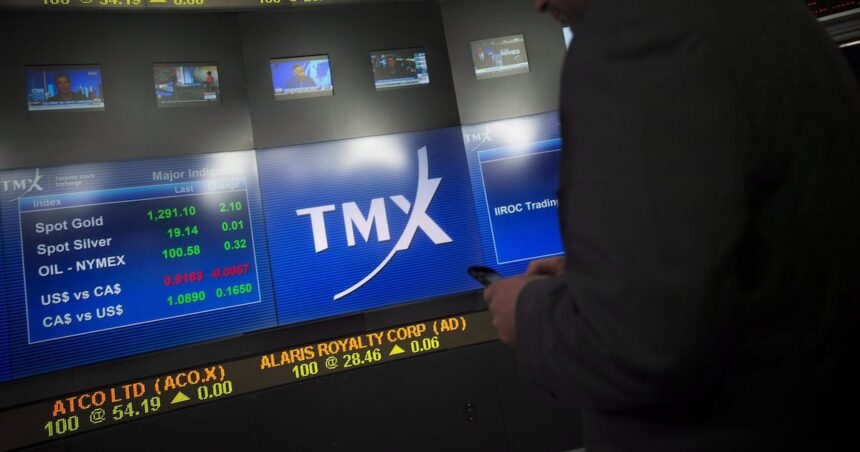As interest rates continue their downward march across Canada, conservative investors who’ve been riding the high-interest GIC wave of recent years are facing a sobering reality: the party is over.
The Bank of Canada’s rate-cutting cycle that began in early 2025 has continued steadily, driving guaranteed investment certificate (GIC) yields below the 3% threshold for the first time since 2022. This shift is prompting a significant pivot toward dividend-paying equities among income-seeking investors.
“We’re seeing a textbook rotation play out in real time,” explains Leah Taylor, Chief Investment Strategist at RBC Dominion Securities. “With five-year GICs now yielding around 2.8%, quality dividend stocks with yields above 4% and growth potential suddenly look quite attractive by comparison.”
This interest rate environment marks a stark contrast from just 18 months ago, when investors could lock in five-year GICs at rates approaching 5.5%. That opportunity created a comfortable safe haven during a period of market volatility. Now, as inflation has moderated to within the Bank of Canada’s target range, the central bank has responded with successive rate cuts totaling 175 basis points since January.
Data from the Investment Funds Institute of Canada shows nearly $4.2 billion flowed out of money market funds in May alone, with a significant portion redirected toward dividend-focused equity funds and ETFs. The shift represents the largest monthly outflow from cash-equivalent investments since 2021.
For many retirees and income-dependent investors, this transition isn’t simple. GICs offered certainty during uncertain times, while dividend stocks introduce market risk back into portfolios.
“The safety premium you pay with GICs is just too steep now,” notes Samir Patel, portfolio manager at TD Wealth. “A carefully selected basket of utilities, telecoms, and bank stocks can deliver twice the yield with reasonable volatility—especially if you can stomach temporary price fluctuations for long-term income.”
Canadian banks in particular have drawn renewed interest. Toronto-Dominion Bank and Bank of Nova Scotia both offer dividend yields exceeding 4.5%, supported by decades of consistent payouts and periodic increases.
The utilities sector has also become a focal point, with companies like Fortis Inc. and Emera Inc. providing yields above 4% with regulated businesses that tend to weather economic cycles effectively.
“Think of dividend investing as buying yourself a pay raise,” explains Taylor. “A high-quality company might increase its dividend by 4-6% annually, while your GIC rate is locked in. That dividend growth compounds powerfully over time.”
Statistics Canada data shows that dividend income is becoming increasingly important for Canadian households aged 55 and above, representing nearly 22% of investment income for this demographic—up from 15% a decade ago.
The tax treatment of dividends versus interest income further enhances the appeal of this rotation. Canadian dividends benefit from the dividend tax credit, resulting in lower taxation compared to interest income from GICs, which is taxed at an investor’s full marginal rate.
“When you factor in the tax advantage, the effective yield gap between dividends and GICs can widen by another 30% for many investors,” points out Charlie Wong, tax specialist at MNP LLP in Vancouver. “It’s particularly impactful for retirees in the middle tax brackets.”
However, financial advisors caution that investors shouldn’t abandon fixed income entirely. GICs still serve critical functions within a balanced portfolio, particularly for funds needed within specific time horizons.
“We’re not suggesting anyone put their entire house deposit fund into dividend stocks,” says Patel. “But for the portion of a portfolio focused on generating income over 5+ years, the math now clearly favors quality dividend payers.”
Market strategists point to several risks that dividend-focused investors should consider. Rising interest rates could eventually return, creating headwinds for dividend stocks, particularly those with high debt loads. Additionally, dividend cuts, while rare among established payers, can occur during economic stress.
The energy sector highlights this complexity. While companies like Enbridge and TC Energy offer attractive yields exceeding 6%, their capital-intensive business models face long-term challenges amid the energy transition.
“You’re not just buying a yield today—you’re buying a company’s future ability to maintain and grow that dividend,” emphasizes Jamal Ibrahim, senior analyst at CIBC Capital Markets. “That requires deep fundamental analysis beyond simply chasing the highest current payout.”
For everyday investors navigating this transition, financial planners suggest a measured approach. Rather than wholesale portfolio changes, they recommend gradually shifting fixed income allocations as GICs mature.
The enduring appeal of dividend investing lies in its potential to provide both income and growth—something particularly valuable as many Canadians face lengthening retirements amid rising costs.
“The pandemic and inflation spike reminded us how quickly economic conditions can change,” Taylor concludes. “Dividend growth provides a natural hedge against future inflation that fixed-rate GICs simply cannot match.”
As 2025 progresses, this rotation from guaranteed instruments to dividend stocks appears poised to accelerate, particularly if the Bank of Canada continues its easing cycle as widely expected. For investors willing to accept some market volatility, the dividend path offers a compelling alternative to the diminishing returns of once-attractive guaranteed investments.






